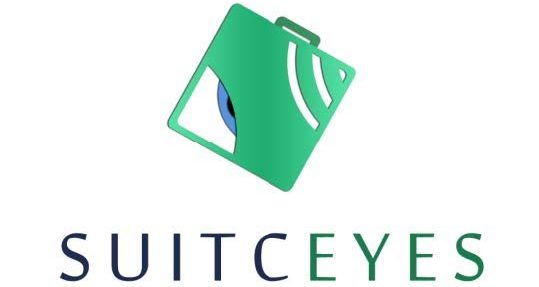SUITCEYES is a three-year long (2018-2020) Research and Innovation project funded by the European Union’s Horizon 2020 Programme, call “Information and Communication Technologies” under topic “ICT-23-2017: Interfaces for accessibility”, and grant agreement number 780814.
The overall objective of SUITCEYES is to improve the level of independence and participation of people with deafblindness and to enhance their communication, perception of the environment, knowledge acquisition, and conduct of daily routines.
Deafblindness is a severe condition that can be congenital or acquired through illness, accident and/ or old age. There are currently an estimated 2.5 million individuals in Europe with deafblindness. Due to extended life-expectancy, and the aging population, this number is expected to rise considerably by the 2030s. Currently there are few ICT tools specifically developed for this group.
SUITCEYES aims at combining and developing cutting-edge technologies and ICT tools to provide a smart, adaptable, haptic interface, which is based on machine learning, sensor technologies, image and signal processing, psychophysics, and affective computing. The result will (i) extend the localisation and environmental perception of the user and (ii) will extend and improve user’s modes of communication via a haptic interface. Various studies will inform the project of user needs and design elements that will allow customisation. To promote and facilitate learning, (iii) gamification and mediated social interaction will be incorporated to facilitate learning and capture and extend the user’s interest, umwelt and engagement.
Towards this end, SUITCEYES will develop and deliver a prototype of a haptic, intelligent, personalised, interface (HIPI) that is intended to be further developed and commercialised in due course, affording improved communication possibilities for its users.
Although the SUITCEYES prototype will be developed specifically for users with deafblindness, the use area of the prototype is not limited to this group. A system that affords improved perception of the surrounding environment, and allows an alternative (haptic) mode of communication can scale to multiple other areas. There are many circumstances where a user lacks full reliance on the visual and auditory senses such as firefighting in smoke filled rooms, rescue missions in dark and noisy environments, sports training and more. Haptic communication would be a reliable and useful complement and/or alternative in all such situations.
The project outcome is not limited to a technological solution, it also includes user and policy studies that in turn will improve our understanding of the needs of people with deafblindness and which will facilitate informed policies and decision making.
